Over 20 years manufacturing experience of Road marking machine and road marking removal machine.
sales@lxdmarking.com+86 15805293662
Comparing Manual vs. Automated Pavement Striping Equipment: Which is Better?
Pavement striping is a critical task for maintaining road safety and aesthetics. Traditionally, this process has been performed manually, but the rise of automated technology has introduced new possibilities. Understanding the differences between manual and automated striping equipment is essential for making informed decisions. This article compares the two methods, exploring their advantages, disadvantages, and suitability for different scenarios.
Understanding Manual Pavement Striping Equipment:
Manual striping involves skilled workers using various tools like trowels, sprayers, or brush-on systems. This method offers precision and flexibility, especially in challenging conditions. However, it can be labor-intensive, time-consuming, and less efficient for large areas.
Advantages:
- Flexibility: Manual striping allows for greater precision in tight spaces and unique geometries.
- Customization: The ability to adjust striping patterns and colors on the fly.
- Environmental Control: Reduced risk of machinery-related noise and emissions.
Disadvantages:
- Labor Intensive: Requires a significant workforce, increasing labor costs.
- Slower Speed: Manual operations can be slow, especially on extensive road networks.
- Human Error: Potential for inconsistent striping and accuracy issues.
Exploring Automated Pavement Striping Equipment:
Automated striping systems use machinery and advanced sensors to lay markings with high precision and consistency. These systems can follow lines with remarkable accuracy, reducing human error and enhancing efficiency.
Advantages:
- Consistency: Automated systems ensure consistent and precise striping.
- Speed: High efficiency in laying large areas quickly, reducing operational time.
- Safety Features: Incorporates safety features like sensors to alert drivers of wet or slippery conditions.
Disadvantages:
- Initial Costs: High upfront costs for purchasing and setting up automated equipment.
- Maintenance: Higher maintenance and operational costs compared to manual methods.
- Learning Curve: Workers may need training to operate the automated systems effectively.
Cost Considerations in Pavement Striping Equipment:
Manual equipment has lower upfront costs but higher labor expenses. Automated systems, while more expensive initially, offer long-term savings through reduced labor and maintenance.
Cost Analysis:
- Initial Investment: Manual equipment costs $5,000
- $10,000, whereas automated systems can range from $50,000 to $200,000.
- Labor Costs: Manual labor costs $20
- $30 per hour, while automated systems reduce labor costs by up to 70%.
- Maintenance: Manual equipment maintenance is around $1,000
- $2,000 per year, while automated systems require $5,000
- $10,000 annually.
Safety and Compliance with Automated Tools:
Automated systems incorporate advanced safety features and comply with stringent regulations. Manual striping, especially in rough terrain, can pose significant safety risks.
Safety Features:
- Sensors: Detect wet or slippery conditions and alert drivers accordingly.
- Wearables: Workers use safety gear to reduce the risk of accidents.
Safety Risks:
Manual striping can lead to accidents due to uneven terrain, poorly maintained equipment, and human error. A city in California reported several incidents where workers were injured or killed during manual striping operations, although these incidents have decreased significantly with the adoption of automated systems.
Efficiency and Productivity: A Comparative Perspective:
Automated systems are highly efficient, capable of producing more markings in less time. This not only reduces traffic delays but also enhances overall productivity.
Productivity Metrics:
- Time Saved: Automated systems can complete a 1-mile striping job in 2 hours, compared to 6 hours for manual operations.
- Occupancy Rates: Improved productivity rates by up to 30%.
- Maintenance Schedules: Automated systems reduce the need for frequent maintenance, leading to higher operational efficiency.
Environmental Impact: Manual vs. Automated Equipment:
Manual striping often results in higher environmental costs due to resource use and waste. Automated systems are generally more eco-friendly, consuming less energy and producing fewer emissions.
Environmental Impact Comparison:
- Resource Use: Manual striping requires more paint and mechanical resources.
- Emissions: Automated systems tend to have lower emissions, making them more environmentally friendly.
Future Trends in Pavement Striping Technology:
Emerging technologies like AI-driven systems and advanced materials are transforming the industry, promising even greater efficiency and precision.
Emerging Technologies:
- AI-Driven Systems: Autonomous robots that can learn and adapt to different conditions.
- Advanced Materials: Durable, longer-lasting materials that require less frequent re-application.
Impact:
These innovations could lead to further reductions in costs, increased efficiency, and enhanced safety. Adaptability and resource optimization are expected to be key areas of focus in the future.
Conclusion:
The choice between manual and automated pavement striping equipment depends on your specific needs and budget. Manual equipment is ideal for small, detailed jobs or areas with unique requirements. Automated systems, while requiring a higher initial investment, offer greater efficiency, precision, and long-term cost savings. By carefully evaluating your requirements and budget, you can make an informed decision that enhances road safety and maintenance. Whether you opt for manual or automated equipment, the key is to ensure that the solution meets your unique needs and aligns with your operational goals.
-
18.Impact:
-
19.Conclusion:

